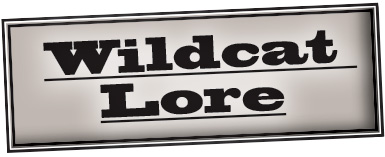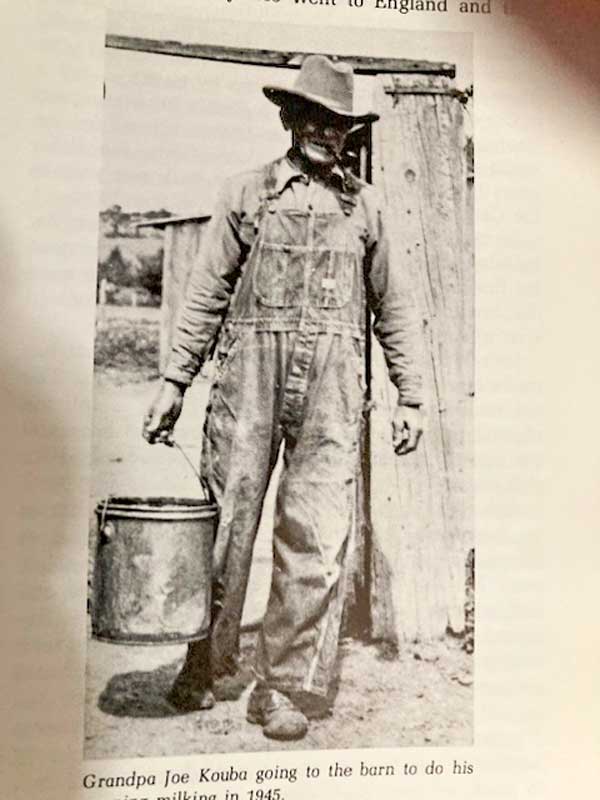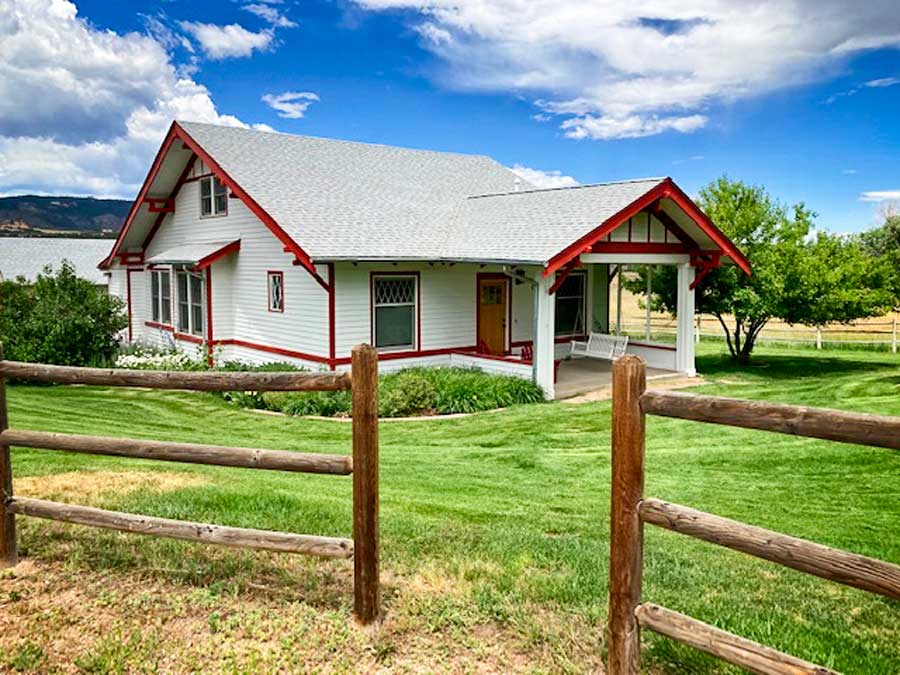Sedalian Joe Kouba: cotton, cows and cedar


Family picture of Joe Kouba, circa 1945. Joe is headed to the barn to do his chores.
Cotton picking was more important than schooling in Denison, Texas in 1882. After Joe Kouba and twin brother Reuben finished third grade, the family farm was all that counted. Apparently a marginal operation, the Koubas moved across the Red River to Marietta, Oklahoma, Native American territory in 1889. There, Joe also fell under the influence of a Texas rancher, Bill Washington. That range experience opened his eyes and horizons and changed him forever. He spent some cowboy time on the Chisholm Trail driving longhorns through native territory.
In 1904, Joe decided to see how others on different plains went about their businesses. His seminal trip was to Brazil and then Argentina, where he observed dryland ranching techniques. Already an accomplished horseman, he rode with the gauchos, roping with the best of them. On return, he joined a cattle drive to Montana, but was not tempted northward by that experience.
Armed with new skills, he reconnoitered the plains of eastern Colorado seeking a homestead. As it always does, fate intervened. Stalled after being pummeled by a blizzard in Wray, Colorado, he staked out a homestead claim there. Not far away was another landholding claimed by Helen Lawver. Fate brought in Cupid, and Helen and Joe would be married in Nebraska in 1913. Operating both parcels simultaneously, they had two children, Leota and Earl. Four years later they “traded up,” moving west, acquiring the Stevens Ranch (known today as the Allis Ranch Preserve) on West Plum Creek on Perry Park Road.

This is the original ranch kit house purchased from Sears, Roebuck and Co. for $3,000. It sits on Perry Park Road on the Allis Ranch Preserve.
Soon after, Helen received a modest inheritance. She promptly turned to her Sears, Roebuck and Co. catalog purchasing a mail-order kit house for $3,000. Joe first heard about it when it arrived at the railroad depot in Corral (an early name for Sedalia). Though blueprints were missing from the shipment, Joe and some landless German immigrants built it, using only the Sears catalog as their guide. Though it came with electrical wiring, it was another ten years before the area gained electrification. The Germans received room and board in exchange for their labor.
For 48 years, the Koubas built a life, starting with dairy cattle that accompanied the ranch purchase. Their products were processed at the Frink Dairy adjacent to the Beeman Ranch in Sedalia. Joe expanded his operation to beef cattle, but not until he first upgraded the original facilities and purchased breeding stock. His inner gaucho, firmly embedded in his psyche, was still alive and well. Not surprisingly, he wanted to develop his own breed that would meet the needs of his ranch. A genuine original horse trader, Joe was known to carry around a flask of whiskey as a catalyst to soften up a prospective seller’s perspective of value.
Joe well knew the value of water; thus, his homestead rights included the privilege of diverting water from West Plum Creek. He created a lake to accommodate his growing needs that also served as a local recreation area. He grazed his cattle along Jackson Creek near Perry Park for the entire summer. He was fond of trees, especially cottonwoods and cedars. It is fitting that his remains are sprinkled with year-round cedar berries at the Bear Cañon Cemetery in Sedalia.
Article and photo by Joe Gschwendtner; Kouba photo courtesy of People of Douglas County